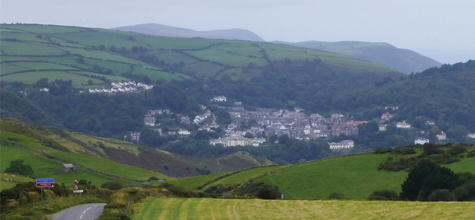Updated guidance for producing LVIAs
Updated guidance for producing Landscape and Visual Impact Assessments (LVIAs) was launched on 17 April 2013. Published by the Landscape Institute and the Institute of Environmental Management and Assessment, the guidance (or ‘Purple Book’) replaces the second edition (‘Blue Book’), published in 2002.
LVIAs provide an opportunity to ensure that new developments respond to the existing landscape or townscape character and consider the visual amenity of the people that move through adjacent areas. They typically sit within the Environment Impact Assessment (EIA) process, but can be produced as a standalone report for a sensitive site where an EIA may not be required.
A carefully considered assessment is often necessary to secure planning permission by avoiding or minimising harmful effects and informing development proposals.
There are two reasons for the updated guidance. The first is the Government’s signing and ratification of the European Landscape Convention. The second reason is the range of good practice examples that have questioned the approach set out in the previous guidance.
As with the previous edition, the guidance does not provide a formula for producing an assessment. The responsibility remains very much with the professional. This approach is sensible as it allows professionals the opportunity to fine tune the assessment according to the circumstances of the site and its surrounding context.
The updated guidance emphasises the split between the two components of landscape and visual impact assessment, which are:
- assessment of landscape effects
- assessment of visual effects.
Despite the repetition this has led to within the document, it is important to differentiate as these are two separate subjects.
The overall approach within the third edition guidelines is broadly the same as the second edition. However there are a number of changes that will affect the way LVIAs are undertaken in the future.
These include:
All-encompassing landscape
The European Landscape Convention’s definition of landscape is inclusive and covers natural, rural, urban and marine areas. Where the previous guidance focused on rural landscape, the updated guidance now includes townscape and seascape issues. It states that the same approach can be taken provided that the particular characteristics of place are considered. We agree that the guidance can be applied to all forms of landscape, but that the assessment needs to respond to its particular context.
The updated guidance introduces links to cultural heritage and historic landscape character, which can help to fully understand the historic characteristics and features of the present day’s landscape. It stresses wisely that this should not be confused with the need for a separate cultural heritage appraisal and that responsibilities should be clear in considering any effects on the setting and views for historic buildings, conservation areas and other heritage assets.
Engagement with the public
Typically, consultation with the public occurs at the submission stage of the assessment. The guidance now suggests that, where practicable, engagement with local stakeholders who use the landscape in different ways will help to scope the landscape and visual issues, and also help to determine the value people attach to an area. We believe that engagement can help assessment work, but the objectives of the exercise should be plainly structured to make the most of the feedback.
Assessing significance of effect
The EIA Directive and UK Regulations mean that identifying and describing the effects of a proposal is not enough, and it should also be assessed on its significance. It was felt that previous assessments relied on matrices or other forms of tabular summaries, which lost sight of the most obvious significant effects. The updated guidance puts emphasis on narrative text descriptions, which can be supported by tables and matrices. We have adopted this approach to ensure non-experts can more easily understand the emerging landscape and visual issues.
Approach to cumulative effects
The need to consider cumulative effects has increased in importance in recent years. The guidelines reference and draw upon the considerable work undertaken by Scottish Natural Heritage around addressing definitions and interpretations of cumulative effects, specifically in relation to wind farms. When considering the cumulative effects the guidance stresses the importance of considering ‘likely significance’.
Further changes include:
Relationship with green infrastructure and proposed development
- Clarification that mitigation should prevent/avoid, reduce and, if possible, offset or remedy any significant adverse effect and that enhancement is not a formal requirement of the EIA Regulations, but is seen as improving the overall quality of the environment
- Removal of case studies to avoid formulaic duplication and encourage an adapted methodology based on circumstances.
- With its release, the Landscape Institute has produced guidance on the transition between the second to third editions of the guidelines. It confirms that assessments started under the old guidelines should be completed using that edition. All assessments started after the publication of the third edition should apply the new approach.

Katy Neaves
Head of VIA
020 7851 4010
[email protected]
Download
You can read the full article as a downloadable pdf here.

